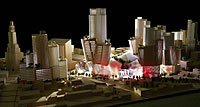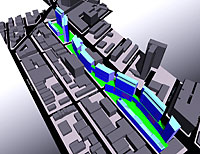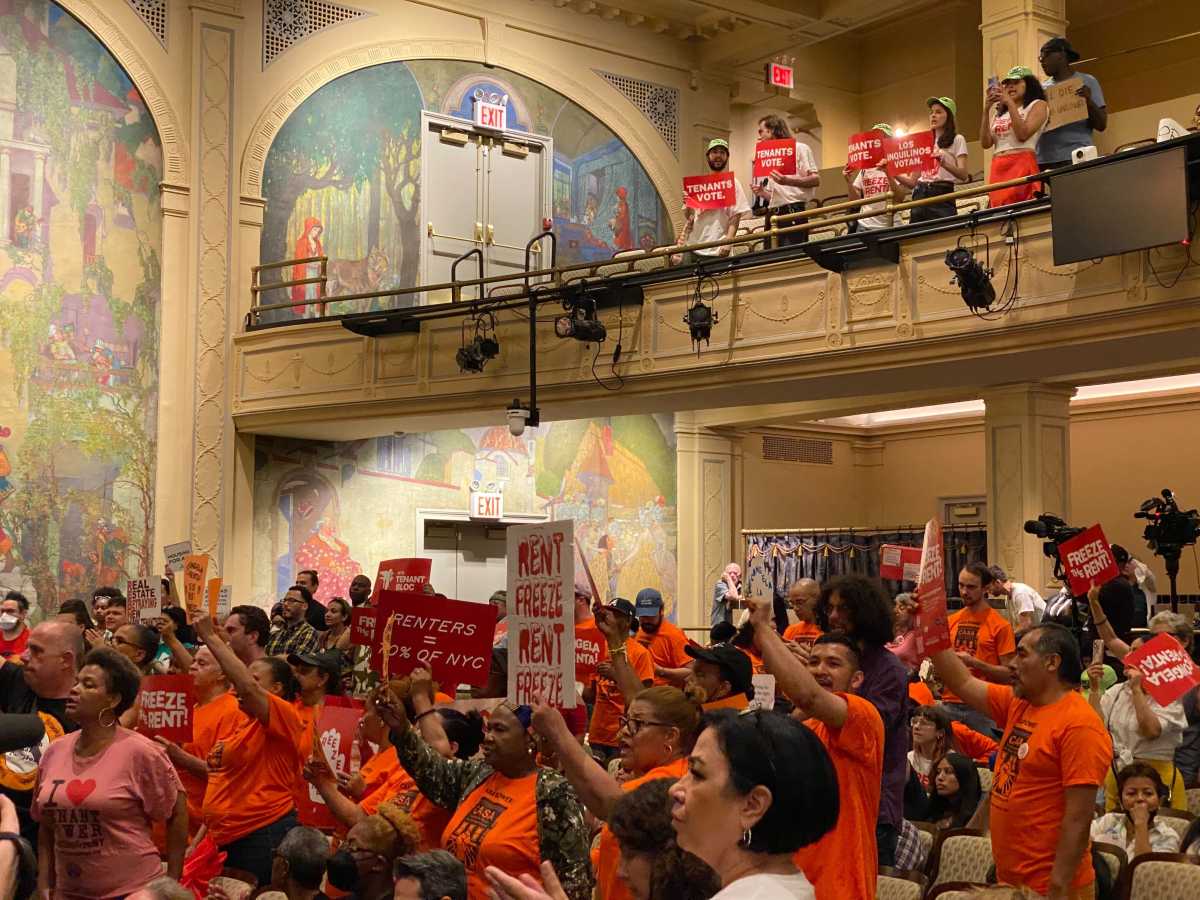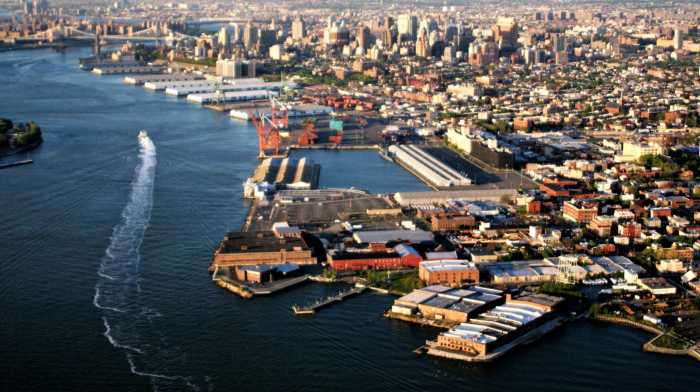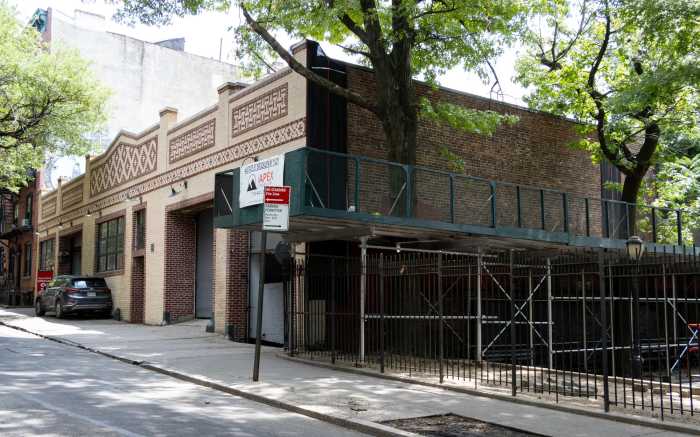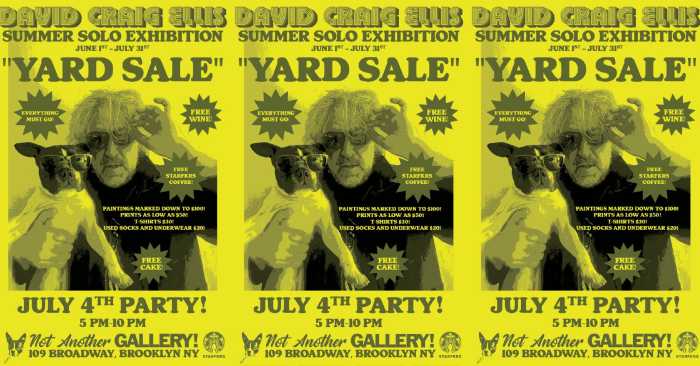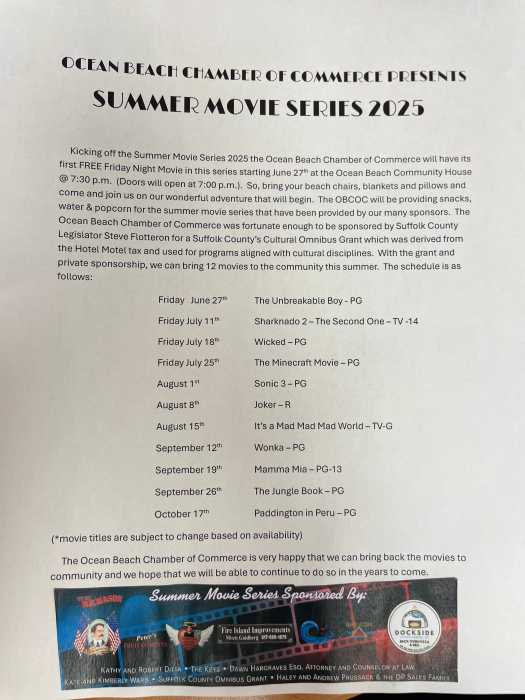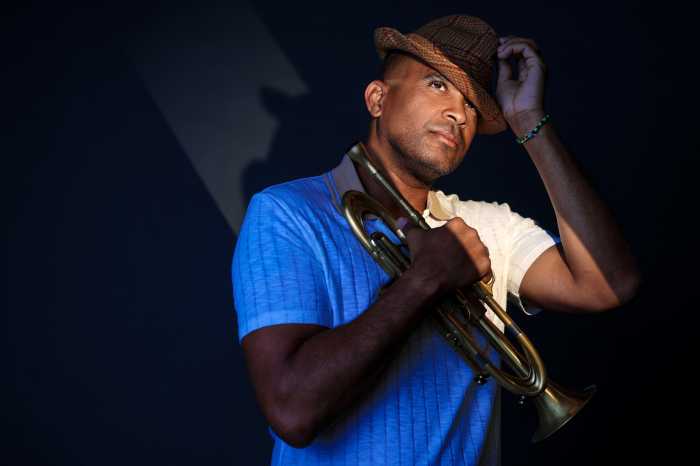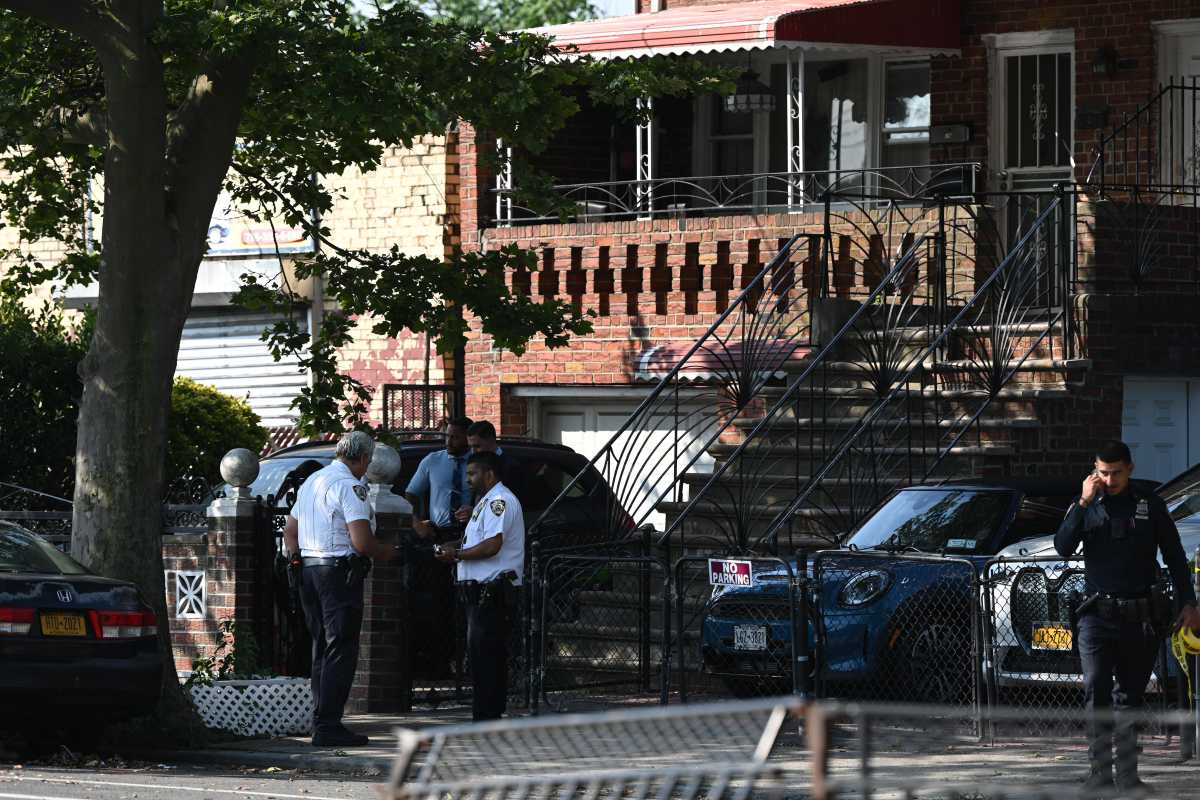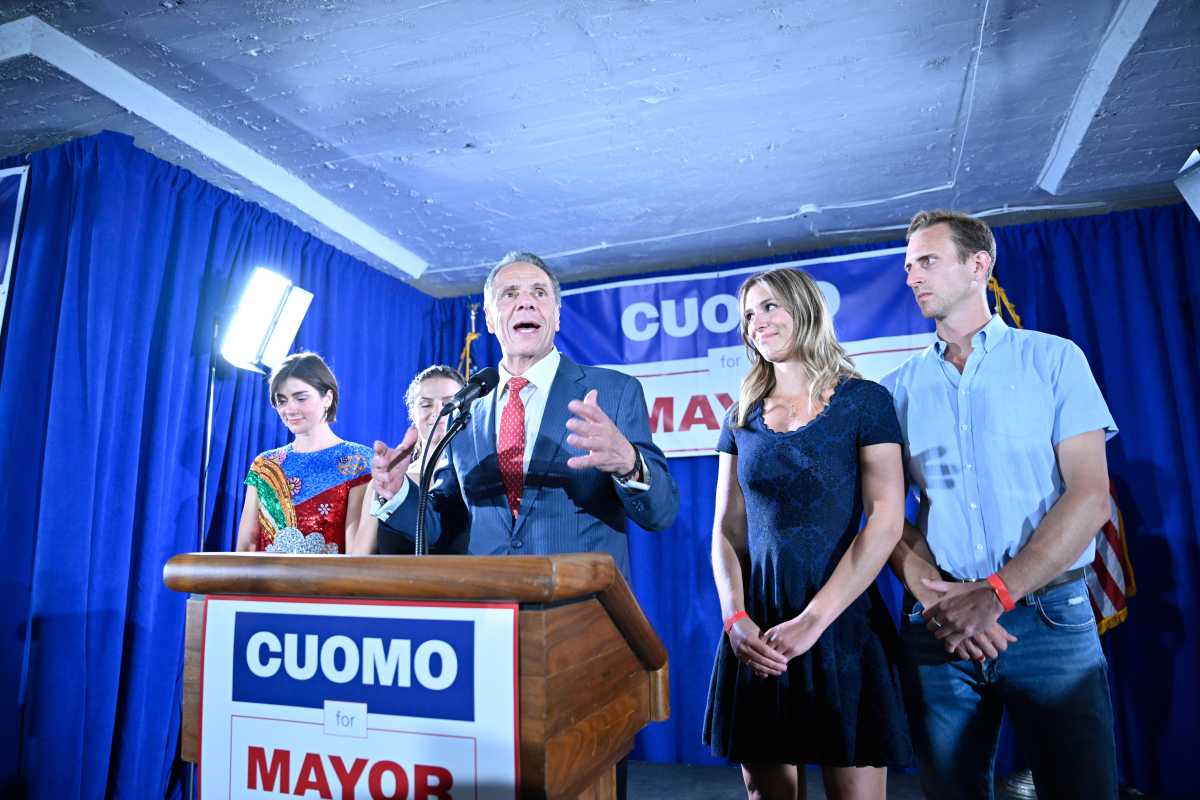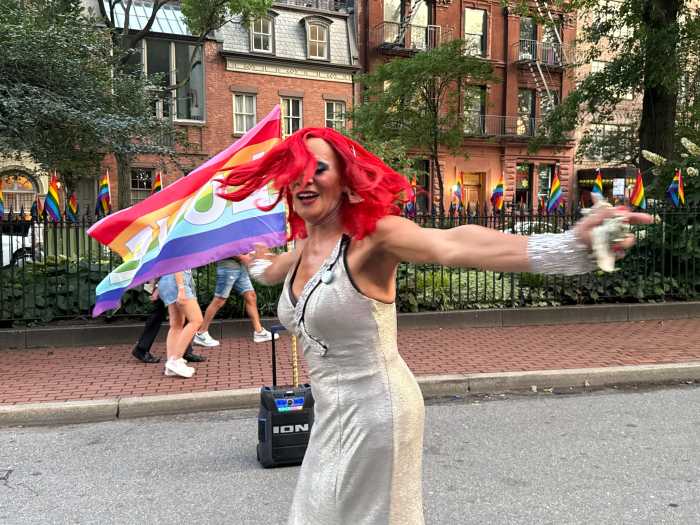At first glance, the May 24 issuance of a request for proposals by the
Metropolitan Transportation Authority for the development rights over
the state agency’s Vanderbilt Yards train tracks seemed a mere formality.
After all, officials of real estate development company Forest City Ratner,
and that company’s principal owner Bruce Ratner, had spent the past
year and a half in discussions with the MTA for the rights to build a
professional basketball arena and 17 residential and commercial high-rises,
including skyscrapers, over the Long Island Rail Road storage yards east
of Flatbush Avenue in a development that would also include private property
south of those train tracks.
So it was inevitable that the rival bid submitted by a Manhattan-based
developer for the 8.5-acre rail yard site just before the July 6 deadline
would turn some heads, to say the least.
Extell Development Company, which recently purchased 77 acres of Upper
West Side property from Donald Trump and his partners for $1.8 billion,
insisted in the face of scrutiny of their motivations last week that the
bid was legitimate, earnest and sincere.
The Extell plan proposes 11 buildings, as opposed to Ratner’s 17.
The tallest would be 28 stories, whereas the Ratner plan’s tallest
peaks at 60 stories, dwarfing the iconic Williamsburgh Savings Bank tower.
With 1,940 residential units and 116,000 square feet of office space,
Extell’s proposal pales in size to Ratner’s looming, Frank Gehry-designed
towers, part of a plan that also includes 1.9 million square feet of office
space, and a 19,000-seat arena for Ratner’s New Jersey Nets NBA team.
Extell’s proposal also boasts some of the same community-centric
ethos that Ratner’s company touted at the signing on June 27 of a
community benefits agreement, or CBA, witnessed by Mayor Bloomberg.
The Extell design, by Brooklyn architects Cetra-Ruddy, snakes in waves
across the three MTA blocks “like a train,” as described by
principal owner Gary Barnett. Extell would bring 1,940 residential units
onto the MTA-owned site alone; Ratner’s plan, extending beyond the
MTA site, includes approximately 13 acres of adjacent private property,
some of it subject to state condemnation under eminent domain, and envisions
as many as 7,300 housing units.
|
|
Community
support
Barnett said he learned of the MTA’s request for proposals through
the solicitation of the anti-Ratner-plan-group Develop-Don’t Destroy
Brooklyn (DDDB). He has, like Ratner, signed on to a community agreement
of sorts.
Barnett has agreed to abide by the 60-point “Principles for Responsible
Community Development” endorsed by at least 19 organizations including
such community stalwarts as the Boerum Hill Association, Fifth Avenue
Committee, Fort Greene Association and Pratt Area Community Council.
Ratner’s CBA promised certain amenities to the co-signers, such as
active roles in oversight of job development, hiring and training, and
made commitments regarding construction work for minorities (35 percent)
and women (10 percent) and the placement of public housing residents.
Extell’s agreement is less specific in detailing its oversight structure
and beneficiaries, but it commits Barnett’s company in ways not envisioned
under the Ratner plan: it promises to disavow the taking of private property
through eminent domain and to voluntarily put its proposal through the
city’s Uniform Land Use Review Process (ULURP).
Ratner’s plan is excluded from ULURP, which is the most stringent
review process in the state.
Extell has also promised to comply with contextual zoning regulations
for the surrounding area, not exceed a 6.0 floor-area ratio in bulk, not
close any public streets, partner with local housing advocates, guarantee
30 percent of the affordable housing units are owner-occupied, guarantee
20 percent of all construction work to minority and women-owned contractors
and provide job training programs, ensure 100 percent of storm water run-off
goes into a sewage treatment plant and assure more than 160,000 square
feet of public park or open space..
“It’s something we thought we could live with,” said Barnett
of the agreement.
Unlike the Ratner plan, Barnett’s plan does not require relocation But Barnett would expect to get the $200 million in city and state infrastructure “Certain parts of the site will need the platform,” Barnett “Other than that we don’t anticipate any other subsidies than Even the MTA request for proposals seemed tailor-made to Ratner, stating
Using the yards
of the rail yards.
that has been offered to Forest City Ratner by the mayor and governor
since a platform would still need to be built over the rail yards.
told The Brooklyn Papers this week. “We’re not asking the MTA
to fund any of those infrastructure improvements. Our understanding is
the city and the state both have appropriated money for that; our understanding
is that it is not exclusive to any one developer.
the incentives for the inclusion for affordable housing,” he said.
But while Barnett offered his bid at the same time as Forest City Ratner,
Ratner has nearly two years of prep work behind him.
For starters, he already owns a substantial swath of property in the area.
And Ratner enjoys the wholehearted support of both Gov. George Pataki,
who staffs most of the MTA board, and Mayor Michael Bloomberg.
that the “City of New York’s designated Atlantic Terminal Urban
Renewal Area developer has proposed a high density mixed-use project for
the site and surrounding parcels including an arena.”
Only a day after Extell’s bid was announced, it was assailed by Borough He has been a cheerleader for Ratner’s plan since it was announced “The Extell proposal may benefit the small number of people who are “Where’s the affordable housing? Where’s the job outreach “I’ve always said that competing proposals are welcome for the “Extell’s proposal appears to provide minimal affordable housing,” “It does not include an arena and lacks the significant job training “I’m not sure why he thinks it’s not beneficial to greater “So his thinking is that if there was an arena, he would support Barnett added that his project would include a school near where the arena “I think [our plan] does have community support. It seems to me our “We’re certainly not advocating whether there should be an arena “I think perhaps a solution could be found if everybody wants to
Arena allies
President Marty Markowitz, whose dream of bringing an NBA team to Brooklyn
— to restore some of the local sports glory taken away by the Brooklyn
Dodgers’ when the baseball team fled for Los Angeles after the 1957
season — has been acknowledged as a catalyst for the creation of
Ratner’s plan.
in late 2003.
opposed to the Ratner plan, but it certainly doesn’t benefit most
Brooklynites,” complained Markowitz in a prepared statement.
for the community?” he said.
rail yards site and it is certainly a healthy thing that another bid has
been put forth,” the statement continued. “I expect the MTA
to make the best possible comprehensive deal for the state, New York City,
Brooklyn and public transit. That deal should produce significant tax
revenue, jobs and housing. It should also include an arena.
he said.
and job creation of [Forest City Ratner’s] bid.”
Barnett called Markowitz’s nay saying unfounded.
Brooklyn,” he said. “What is the matter with a moderate and
substantial project that repairs and modifies two neighbors?
our project?” Barnett wondered, and pointed out that a project should
be based on what it brings into a community as a whole.
is planned under Ratner’s plan, an idea that he said was well received.
project has merit and it is a good development; the only thing it seems
is missing is an arena for Brooklyn.
or shouldn’t be an arena, and I’d love to have the support of
the borough president,” Barnett said, adding that an arena was not
out of the question under his plan.
have an arena,” he said.
Asked for the dollar-value of his bid, Barnett said he would not disclose “We would be very content if the MTA were to release all information “We will share information about the bid once it is presented to Still, anti-Ratner-plan community organizations turned out July 7 on the “We, the people, say these are our streets,” said James. “We, The MTA board could make a decision as soon as its July 27 monthly meeting,
All aboard
the amount of respect to the MTA, but said he would like to see the agency
put the information out there.
about the various bids,” he said.
Ratner’s executives agreed.
the board,” said Joe DePlasco, a spokesman for Forest City Ratner,
who touted the community benefits agreement as representing “a broad
coalition of community representatives.”
steps of City Hall, along with Councilwoman Letitia James, state Sen.
Velmanette Montgomery and Congressman Major Owens to offer their support,
unsolicited, to the Extell bid.
the people, say this is our community. A plan that respects us is a plan
that doesn’t involve eminent domain.”
but does not have a deadline.


